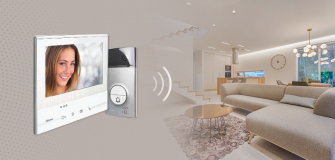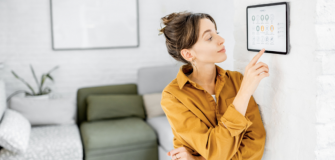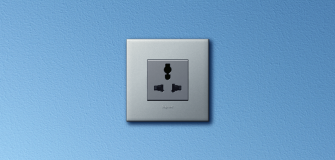Predicting A Smarter Future: 14 Smart Home Technology Trends
Share
Predicting A Smarter Future: 14 Smart Home Technology Trends
Homes are getting smarter and there are no two ways about it. Thought of as science fic-tion in the not so distant past, smart homes are here to stay and how! With devices like Alexa, Google Home and more taking over, 2018 is set to be the year of the smart home. Keeping that in mind, let’s take a look at 14 home technology trends that are set to go big.
#1 Integration is the name of the game
Integration that supports homeowners is set to be the make or break point of smart home technology. 2018 is set to see more AI inte-gration of smart home devices that will result in a more comfortable and secure lifestyle. This means turning off the lights when you forget to do so, locking up your home at night and deactivating alarms with facial recognition.
#2 Data exchange
While available to an extent on Alexa, data exchange is about to take off in a big way. The next step in this journey is having your fridge order the food or the home turning up the lights and air conditioning in anticipation of your arrival.
#3 Increased customisation
As AI becomes smarter, soon the need to physically turn on and off devices will disappear and AI will take over. It will control every aspect of our home and adjust it to our needs.
#4 Higher cross-compatibility
Cross-compatibility is crucial for smart home technology’s success. The ability to choose the devices and link to the system of their choice is much in-demand as currently people are stuck with the compatible devices to their selected systems. Less platform lock-in will open up the market and encourage more and more people to embrace smart homes.
#5 Increased voice integration
Everyone knows that speaking commands is more natu-ral than typing and tapping and home technologies are fast catching up to this. A grow-ing number of voice controlled devices are hitting the market and will continue to do so.
#6 Focus on surveillance
Homeowners are increasingly looking towards smart home technology to keep their home and loved ones secure. From smart doors that capture images of people who ring the doorbell to intruder alerts and nanny cams of little ones, the smart home security segment is set to boom.
#7 Broader uses
As device interoperability increases so do the potential uses of home automation. Technology will now shift to appliance diagnostics, energy conservation and more.
#8 Integrated wearable devices
Wearable devices are just as rapidly developing as home automation and there is no reason that the twain shall not meet. Wearable devic-es will integrate with home automation systems to customise the wearer’s experience. For example, a room that automatically adjusts the music volume based on the user’s preference as soon as they walk into the room.
#9 Increased security concerns
As with anything connected to the internet, smart homes are also at the risk of being hacked into as time passes. This will result in a rise of home protection software that will not only deflect such attacks but also inform the homeowner about them.
#10 Smarter kitchens
When the whole home is connected, why leave the kitchen be-hind? Smart homes will soon see kitchen gadgets that have been integrated into the home so homeowners can control what is cooking and how much time is left.
#11 Smarter outside
Not just homes, commercial spaces too are set to become more smart and adaptable to the user’s needs.
#12 Simpler and better devices
As the home automation market increases, devices will set to become simpler and easier to operate. This means more efficiency, increased voice commands and more.
#13 More customization
In its fledgling stages, home automation is not too customis-able. This will change in the future as devices become increasingly customisable to ac-commodate user needs like setting things like coffee temperature, the lights and even buttons on keypads more to the user’s preference.
#14 Greener devices
As home automation matures, it will become more energy con-scious and green. This includes knowing when to turn off the devices when not in use, better energy and temperature control.




















